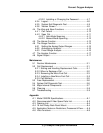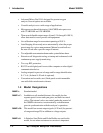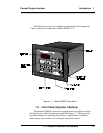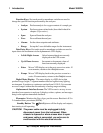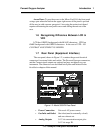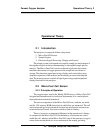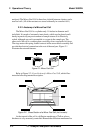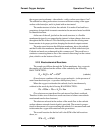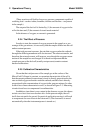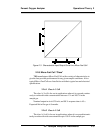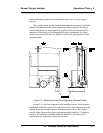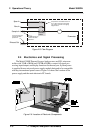
2-1
Percent Oxygen Analyzer Operational Theory 2
Teledyne Analytical Instruments
Operational Theory
2.1 Introduction
The analyzer is composed of three subsystems:
1. Micro-Fuel Cell Sensor
2. Sample System
3. Electronic Signal Processing, Display and Control
The sample system is designed to accept the sample gas and transport it
through the analyzer without contaminating or altering the sample prior to
analysis. The Micro-Fuel Cell is an electrochemical galvanic device that
translates the amount of oxygen present in the sample into an electrical
current. The electronic signal processing, display and control subsystem
simplifies operation of the analyzer and accurately processes the sampled
data. The microprocessor controls all signal processing, input/output and
display functions for the analyzer.
2.2 Micro-Fuel Cell Sensor
2.2.1 Principles of Operation
The oxygen sensor used in the Model 3000P series is a Micro-Fuel Cell
designed and manufactured by Analytical Instruments. It is a sealed plastic
disposable electrochemical transducer.
The active components of the Micro-Fuel Cell are a cathode, an anode,
and the 15% aqueous KOH electrolyte in which they are immersed. The cell
converts the energy from a chemical reaction into an electrical current in an
external electrical circuit. Its action is similar to that of a battery.
There is, however, an important difference in the operation of a battery
as compared to the Micro-Fuel Cell: In the battery, all reactants are stored
within the cell, whereas in the Micro-Fuel Cell, one of the reactants (oxygen)
comes from outside the device as a constituent of the sample gas being



